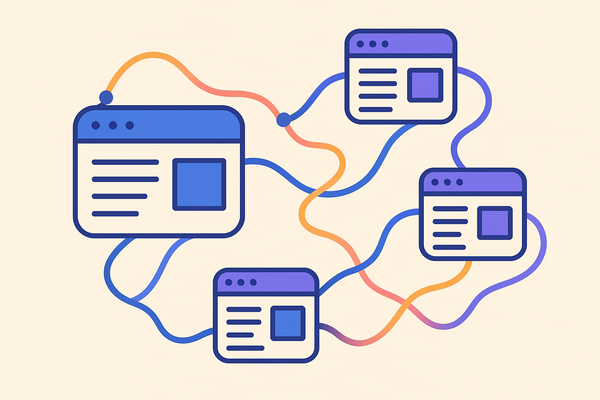SaaS SEO Checklist to Guaranteed Traffic

As a SaaS SEO Agency we've learned that nothing stays the same for long in SEO.
Due to the fact that things change pretty much everyday, you can't expect that having a great product is enough to stand out anymore.
Don’t miss out on the best tips on improving your SaaS SEO performance, just by implementing new and easy strategies that will help you increase your organic traffic.
Please check the SaaS SEO Checklist below or make a copy of this Google Sheet SaaS Checklist
2024 SaaS SEO Checklist
| Task | Description | Completion Status | Priority | Notes |
|---|---|---|---|---|
| Keyword Research | Identify relevant long-tail keywords and semantic search terms | High | Use tools like Ahrefs or SEMrush | |
| Optimize URLs | Ensure URLs are short, clear, and keyword-rich | High | Example: yourbrand.com/keyword | |
| Title Tags | Craft titles with main keywords under 60 characters | Medium | Use catchy phrases like "Check it out" | |
| Meta Descriptions | Write engaging meta descriptions under 160 characters with keywords | High | Include action words like "Explore" | |
| Header Optimization (H1, H2) | Use H1 for main titles, H2 for sections, etc. | Medium | Structure content clearly | |
| Mobile Optimization | Make sure the website is mobile-friendly | High | Test with Google’s Mobile-Friendly Tool | |
| Page Speed | Improve load times with image optimization and browser caching | High | Use Google PageSpeed Insights | |
| Backlink Strategy | Create valuable content and build backlinks | Medium | Collaborate on guest posts | |
| Internal Linking | Add internal links to improve user navigation | Medium | Prioritize important content | |
| Schema Markup | Add schema markup for rich snippets | Low | Use Google’s Structured Data Helper | |
| Track Keyword Rankings | Monitor keyword performance using tools like Ahrefs | High | Focus on high search volume keywords | |
| Content Refresh | Regularly update old content with fresh insights | Medium | Track performance using Google Analytics | |
| Competitor Analysis | Analyze competitors' keywords and backlinks | Medium | Use SEMrush for gap analysis |
TL;DR
To get your software noticed, start by familiarizing yourself with the concept of Search Engine Optimization (SEO).
To get more visibility, find exactly what words people are using to meet search intent.
Then, use those keywords on your URLs, meta descriptions, and title tags so that the search engines (SE) rank your content higher.
Next, work on your site speed and make it look great on mobile devices. Nobody likes a slow website, and neither do SE.
There are other things you can do such as building solid backlinks and staying active on social media to boost your visibility and credibility.
Always keep in mind that there are multiple web pages out there so in order to stand out, your page's content should solve possible user problems, showing off your software as a service (SaaS) as the way to go.
Keyword Research and Strategy
When you type in what you’re looking for on the searching tab of a Search Engine (SE), you are using keywords that represent the topic or information you want to learn more about.
Once you do that, the SE looks through its stored information to find the best matches, and it will show a list of results, with the most relevant ones at the top.
Now, if you're the one who offers an answer that matches the user's search intent, and want to rank higher, try using long-tail keywords and look into semantic search to catch those specific queries your competitors might miss.
Take a look at some expert on keyword research services for extra help in this part!
Navigating the Keyword Jungle!
Understanding search intent—why people search—is crucial for designing content that fits their needs.
By using the right keywords you can match what users are looking for, increasing your chances of success, improving engagement and converting your readers into customers.
There are four common types of search intent:
- Informational intent
- Commercial
- Transactional,
- Navigational.
Tools for Effective Keyword Research
There are tons of tools out there for keyword research—seriously, hundreds! To keep things simple and not overwhelm you, we'll just cover a few of the best ones that can really make a difference.
Swiftbrief’s free tools generate related keywords to your topic of interest and organize them into clusters.
It makes planning and SEO performance much easier. Plus, it offers handy features like content briefs, blog outlines, and meta title suggestions to streamline your content creation process.
SEMrush and Ahrefs are both great for keyword research, look up on your competition, and backlink analysis. Both do similar things, so choosing between them depends on what features you need and your budget.
There's also Google Keyword Planner, which shows you how popular different keywords are and suggests new ones based on your interests. If you pair it with Google Search Console, you'll have great results on your on-page SEO.
Is Your On-Page SEO Inviting?
After getting your keywords, you want to ensure your page is easy to navigate and organized.
On-page SEO is the process of making small adjustments directly on your webpage so that search engines can find it more easily and show it to people who are searching for related topics.
You can see it as setting up a café so that it is easy for customers to find and enjoy.
You want everything—from the café’s name (URL) to its outside (meta descriptions) and inside (content structure)—to be inviting and well-organized. Needless to say that the quality of the content itself is really important; the better it is, the more customers trust you.
Nowadays, search engines understand beyond relevant keywords, such as related words, synonyms, and natural language. So, learn how to gain topical authority.
That being said, what are the critical parts of on-page SEO?
URLs
We are all familiar with google.com, right? That's a URL. Basically, an URL is the address that leads to a website, and the best way you can optimize your own URL is to keep it short and clear.
Go for something that's short and clear so that your visitors know who you are and what your page is about before they click, like "yourbrand.com/project-management-tools".
It’s easier for search engines too—they quickly get what your page is about and can show it to the right people. Plus, clear URLs make your site look legit and trustworthy.
Real example of the ideal URL following the format of yourbrand.com/how-to-gain-topical-authority
Headings:
Ever been to a webpage that’s just a big, boring wall of text? It’s the worst! Headings are your best friend here. Use H1 for your main title of the page, H2 for big sections, H3 and so on to organize the information and fight those long monotonous texts.
Keep only one H1 per page and use the rest of the headers hierarchically (H2s under H1; H3s under H2s, etc.).
This is what your headings should be looking like!
Meta Title:
Meta titles are what people see first in search results. Once again, they should never be too long and exhausting, around 60 characters seems just fine, and always include your main keywords. Pro tip: use some engaging catchy expressions like 'check it out' or 'don't miss out'.
Simple, short and catchy.
Meta Description:
Meta descriptions is a brief yet tempting summary of the page and should be around 160 characters, including your target keyword or keyword phrases.
Small pack with lots of info
Internal Links:
Your internal linking structure is the key to keep your visitors exploring your site longer, so keep this in mind: internal links should guide your site visitors to more good stuff so be careful choosing the best quality internal links as it can be a very impactful seo tool.
To get the most out of your internal linking, stick to these practices: Include the most important links at the beginning of your text.
Is Your Website Technical SEO Outdated?
Technical SEO makes sure search engines can find, crawl, and index your site smoothly. This includes page speed, mobile optimization and security. Without solid technical SEO, your site might look good but won't perform well.
Off-Page SEO
While on-page SEO involves optimizing your website’s content, off-page SEO focuses on activities outside your website that will help improve its reputation.
Search engines prioritize content from sites that demonstrate "experience, expertise, authoritativeness, and trustworthiness" (EEAT) so learn some tips on how to improve your EEAT.
Here's a few strategies to help you master off-page SEO, incorporating SEO best practices to rank content higher on search engine results pages (SERPs).
Master the Best Backlink Strategy!
To put it simply, whenever you go to a website and you see blue text associated with a link to another page, that’s a backlink. This page added it because they found value on the page they linked to.
So, the goal is to make outstanding content that makes other entities want to link to you.
This is pretty useful to get better visibility out there, because not only a backlink works as a shoutout, driving more organic traffic to your website, but also makes your page more visible to search engines and all of this will make you rank higher and have even more visibility.
Now you might be wondering - how do I get more backlinks to my website? Let’s go through some strategies you can implement on your website:
Time to Start Getting Social
Social media plays a significant role in SEO, so if you’re active on social media, you’re shouting out to the world about your brand. This can drive traffic to your website, and search engines notice this. More traffic can lead to better rankings in search results. Plus, if people share your content, it can create backlinks, which are good for SEO.
To stay consistent with your online presence, try to post regularly. It doesn’t have to be every day, but find a schedule that works for you and stick to it.
Plan your posts ahead of time and use some scheduling tools so you're not in a rush, trying to think of something to share last minute. Plus, the more you interact, the more you get noticed, which can open up many opportunities! Don’t forget to interact with your audience—reply to their comments and messages so that you create a stronger connection with them.
SEO Spy Games: Decoding Competitor Tactics!
Peeking on your competitors' keywords, backlinks, and content can be handy, so you know what's working well and what you should avoid on your own website. First, you want to check what keywords are boosting their rankings. This helps you fine-tune your own keyword strategy and find new ones to target.
Their backlinks reveal where they’re getting their SEO power—if they work for them, they could work for you too.
Then there’s their content. You can create a killer content plan that hits the bullseye by seeing what types of posts and videos their audience loves.
And the best part? You can use all this info to level up your own SEO game. Maybe adjust your content to focus on those winning keywords or get good performing backlinks.
You might be wondering, how do I do it? First, grab tools like SEMrush or Ahrefs—they’re like your SEO spy gadgets.
When you’re ready to reach out for those backlinks, personalize your pitch. Show them why your content would resonate with their readers. And don’t hesitate to follow up—it shows you’re serious about building those relationships.
Remember, it’s not about copying your competitors, but using their strategies to sharpen your own SEO game and stay ahead of the crowd.
Content Marketing Secrets Every Creator Needs to Know
Content marketing has one clear goal—it wants to connect with you and eventually lead you to take action, whether that's buying something or signing up for more info. Unlike regular content that's just there to entertain or inform, content marketing is crafted to gently guide you towards making a decision.
The Power of High-Quality Content
Your audience can make or break your content, so it's crucial to understand them before you start writing by thinking about who they are, what grabs their attention, and what challenges they face. Once you get your audience, ensure your content is easy to read and accessible for everyone by organizing it well and writing clearly. Content velocity, which is how quickly you create and share new stuff like blogs, videos, or social media posts, is key to keeping your audience interested and engaged since consistently sharing fresh content means they always have something new and exciting to check out.
These are the most used content types that you can use:
Content Distribution: What's That?
Your audience can make or break your content, so it's crucial to really understand them before you start writing by thinking about who they are, what grabs their attention, and what challenges they face.
Once you get your audience, ensure your content is easy to read and accessible for everyone by organizing it well and writing clearly.
Content velocity, which is how quickly you create and share new stuff like blogs, videos, or social media posts, is key to keeping your audience interested and engaged since consistently sharing fresh content means they always have something new and exciting to check out.
What about content optimization?
Basically, content optimization is the process where you find a way of making your content seen by search engines, such as finding relevant keywords that you can incorporate in your headings and throughout the text or even making your site user oriented by assuring it loads fast and looks good on any device.
Now, your focus should be on the content itself, and what differentiates you from everyone else.
And don’t fall under the trap of overdoing it! De-Optimising SEO content is another skill that has been underestimated but it’s very very powerful.
Let's Talk About Analytics
Some SaaS websites excel while others remain unnoticed... don't skip these two steps to be in the good books: monitor your performance and study your website’s analytics. This will help you not only identifying problems early, but also understanding visitor behavior and make informed improvements.
Without regular tracking and analysis, you're only guessing and we don't want that.
Key Performance Indicators (KPIs)
KPIs, or Key Performance Indicators, are your website’s scorecard. They reveal how well your site performs in key areas.
For SaaS SEO, some KPIs are particularly critical:
Organic Traffic
When visitors find your website through unpaid search results, that's called organic traffic, and it indicates that your SEO efforts are successful. Ideally, you want this number to increase over time.
If you want to improve your organic traffic, focus on creating valuable content that answers your audience’s questions. Use relevant keywords naturally, ensure your site is mobile-friendly, and optimize page speed. These steps will help you rank higher in search engine results and attract more visitors.
Bounce Rate
This informs you of the percentage of visitors who leave your site after viewing just one page. A high bounce rate can indicate your content isn’t engaging or users aren’t finding what they need. Aim for a bounce rate below 50% for SaaS websites.
To reduce your bounce rate, make your content engaging and relevant. Improve site navigation so users can easily find what they’re looking for. Also, speeding up page load times can significantly reduce bounce rates, as slow pages drive visitors away.
You can also improve site navigation so users can easily find what they’re looking for. Also, speeding up page load times can significantly reduce bounce rates, as slow pages drive visitors away.
Conversion Rate
Keep an eye on this crucial metric because it directly affects your revenue—conversion rate. This is the percentage of visitors who take an action, like signing up for a trial or subscribing to your newsletter. Ideally, you should aim for a conversion rate of 2-5%.
You can try A/B testing to see which versions of call to action works best. Don't forget to simplify your sign-up forms and include social proof, like customer testimonials, to build trust with your visitors.
Keyword Rankings
Keyword rankings show where your website appears in search engine results for specific keywords. High rankings for target keywords mean more visibility and traffic. Aim to rank on the first page of search results, ideally in the top three spots, since these get the most clicks.
What you can do to get there is to optimize on-page elements like title tags, meta descriptions, and headers with these keywords. Regularly update content to keep it fresh and relevant, and build high-quality backlinks to boost authority.
Tools for Analytics
Using the right tools for analytics can really impact how effectively you monitor and improve your website’s performance. Here are some essential tools that provide invaluable insights:
SaaS-Specific SEO Considerations
For a successful SaaS business, having strategies in place for things like content creation, scheduling, individual marketing campaigns, lead generation, and customer retention is key. But guess what? SEO can make all of these even better, as long as you have a solid plan—and a handy checklist—on how to do it.
First off, you’ll need to figure out who’s in charge of each part of the SEO strategy. Decide on the tools you'll use to assess your website’s performance and set a realistic timeframe to see improvements. SEO is no walk in the park; it takes time and effort. We’ve barely touched on everything involved.
You’ll need to think about both on-page and off-page SEO. This means optimizing your own content and technical performance and also working on link-building strategies. If you’re a larger business with hundreds of web pages, you’ll need a specific enterprise SaaS SEO strategy.
All you need to know of SaaS Funnel Alignment
A few years back, the goal with SaaS marketing funnels was quite straightforward: attract new leads and to focus on how to sell the products. But now, things have changed. These days, customers have numerous choices and do a lot of research on their own before making decisions. So, just generating leads isn’t enough anymore, rather, it’s about how customers prefer to purchase them.
That's a significant shift! And it means we need to address some common misconceptions about SaaS marketing.
SaaS buyers, especially in B2B, take their time. So, investing money on social media ads and bulk emails that don’t truly connect with people is a waste of resources. Buyers today prefer to purchase from brands they trust and know. Just because someone downloads a piece of content or signs up for a webinar doesn’t mean they’re ready to buy, especially in the B2B world.
SaaS Funnel Alignment is basically the process of aligning you strategies to someone who is hearing for the first time about your software (awareness stage), to when they decide to try it out (consideration stage), and finally become regular users (conversion and retention stages), everything feels natural and easy for them.
How can you make this most of customer retention?
Customer retention relies on providing a fresh and appealing service, which is easy to navigate, so that it leaves your customers satisfied and not only supporting your business but also recommending it to others, contributing to natural growth.
Want to keep your customers coming back? Here are some awesome tips you won’t want to miss:
Why Competitive Analysis is a Game-Changer
So, why should you care about what your competitors are up to? Simple. Understanding their strategies gives you priceless insights. You’ll see what’s working for them, what’s flopping, and where you can step up your game.
Steps to Analyze Competitor Strategies
Step number one is the most obvious one: you want to know who are the entities popping up in search results for the keywords you're targeting. Just do a quick Google search and jot down the top names.
Next, let's get into their keywords. You can use SEMrush or Ahrefs to see which keywords your competitors are ranking for. You might find new keywords during the process and you figure out which ones are driving the most traffic to their sites.
Then, check out their content. Look at what kind of content they’re creating. Are they blogging, making videos, or sharing infographics? See what topics they cover and how they engage with their audience. This is a good exercise to get some new ideas on how to innovate your own content and help you connect better with your audience.
Now, let’s talk backlinks. The more high-quality backlinks a site has, the better it ranks in search results. Use Ahrefs to see where your competitors’ backlinks are coming from. This will show you potential sites to target for your own link-building efforts.
And don’t forget to peek at their social media. Watch which platforms they’re using, what kind of content they’re posting, and how their audience is interacting with them. This can give you fantastic pointers for your own social media strategy.
Mastering SEO Tools
SEMrush is fantastic for keyword analysis. Pop your competitor’s URL into SEMrush to get an overview of their performance, including their top keywords. Dive deeper to see all the keywords they rank for. Focus on the ones with high search volume and low competition – those are your golden tickets. The Keyword Gap feature is brilliant for comparing your keywords with theirs and spotting gaps you can fill.
Ahrefs is your best buddy for backlink analysis. Enter your competitor’s URL into the Site Explorer to get a detailed view of their backlink profile. Look at the number of referring domains – more high-quality backlinks usually mean better SEO performance. The Content Gaps tool helps you see where your competitors have backlinks that you don’t, giving you a roadmap for your own link-building.
Building a Vibrant Community
Another crucial aspect to stand out is building a strong community around your brand. Create spaces where your customers can connect, like forums, social media groups, or live events. A vibrant community fosters loyalty and makes your customers feel like they’re part of something special. Engage with your community regularly, listen to their feedback, and make them feel valued. This turns one-time visitors into loyal customers who keep coming back.
Continuous Improvement in SEO
In SEO, you definitely should regularly check what’s working and what’s not on the market, then make some tweaks to improve how your website shows up in search results.
Imagine if you kept using the same old tactics while everyone else is trying new and better ways. Adapting means you stay competitive and keep up with changes in how search engines rank websites. It helps you attract more visitors and potential customers to your site.
You can measure the effectiveness of continuous improvement efforts in SEO by looking at things like how much traffic you’re getting from search engines, how long people stay on your site (which shows if they find it useful), and how many of them take action, like signing up or buying something. These indicators tell you if your changes are working.
Regular Audits and Updates
An audit in SEO is basically giving your website a check-up of its performance online.
During an audit, you want to check things like broken links (which can frustrate visitors), how fast your pages load (because slow sites annoy people and search engines), and if your keywords are still bringing in the right kind of traffic.
Start with the things that have the biggest impact on your site’s performance. Fix critical issues like broken links or pages that take forever to load. Then, move on to less urgent things like updating content or adjusting keywords.
Tools like Google Search Console can show you what’s going wrong with your site technically. Ahrefs and SEMrush are great for seeing how your keywords are performing. These tools make it easier to find problems and fix them before they hurt your SEO.
Content Refresh
Follow these steps to refresh your content:
- What criteria should you use to identify content that needs refreshing or updating?Look for content that used to get a lot of visitors but doesn’t anymore. Also, see if there are newer articles or competitors' content that are ranking higher than yours. Updating your content keeps it relevant and competitive.
- How can you leverage data from tools like Google Analytics to inform content refresh decisions?Google Analytics tells you which pages are getting the most views, how long people stay on those pages, and where they come from. Use this data to decide which pages need a refresh to keep visitors interested and coming back.
- What strategies can you use to maintain consistency in content quality and relevance over time?Keep researching your audience’s interests and problems they want solutions for. Regularly update your content with fresh information or different angles on the same topic. This keeps your content useful and up-to-date.
Staying Updated with Industry Trends
Tools and Resources
Now the question that doesn’t want to go away… What are the essential tools for keyword research, technical SEO audits, and monitoring backlink profiles?
For keyword research, tools like SEMrush and Google Keyword Planner are great. Google Search Console and Ahrefs help with technical SEO audits. Ahrefs and SEMrush are also useful for keeping an eye on your backlinks and seeing where they’re coming from.
Before integrating any tools into your workflow, read reviews from other users to see what they say about them. Look for ones that are easy to use and provide clear, actionable insights. Many tools offer free trials, so you can test them out before committing to a paid plan.
Sometimes specialized tools can provide insights that big tools miss so keep an eye on those, for example, local SEO or competitor analysis.
Industry Blogs, Webinars, and Conferences
When you explore industry blogs like Moz or Backlinko, watch out for practical tips and insightful case studies that could revolutionize your SEO strategy.
Attend SEO webinars and conferences to have one more source of growth. Don't ever skip the basics such as taking notes, actively participate by asking questions, and engage with fellow attendees and speakers.
Learnings Recap
First things first, always try to understand your audience and their search habits. You need to know who your customers are and what they’re looking for. Use tools like Google Keyword Planner to discover the exact terms they’re typing into search engines.
On-page SEO comes next. Adjust each page on your site for better search engine visibility. Write engaging titles and meta descriptions that include your main keywords. Use headers like H1 and H2 to structure your content, because it makes it easier to read and your audience will thank you for that. Also, ensure your content is valuable and naturally incorporates keywords without overstuffing them.
Now, technical SEO is super important even if it's not visible because it makes the user experience way better. You want your website to load quickly and be optimized for mobile users. Many people browse on their phones, so a mobile-friendly site is one of your main concerns. Use XML sitemaps and robots.txt files to help search engines navigate and index your site effectively.
Next up, ideally you want to update your content regularly so that not only you establish authority but you also drive more traffic to your domain, and this is what we call content marketing.
To improve your credibility, get involved in networking and link building. Start by writing guest posts for industry websites and create differential content that other sites will want to link to.
It's also important to do regular audits because you want to eliminate technical problems like broken links, and of course, always look to have the best and most engaging content on the market.
And don’t forget to track your progress! You won’t be falling asleep looking at numbers because tools like Google Analytics and Google Search Console help you a lot reading and understanding key metrics such as organic traffic, bounce rate, and conversion rate.
Should you want to epxlore other options, have a look at our On-Page SEO Checklist.




